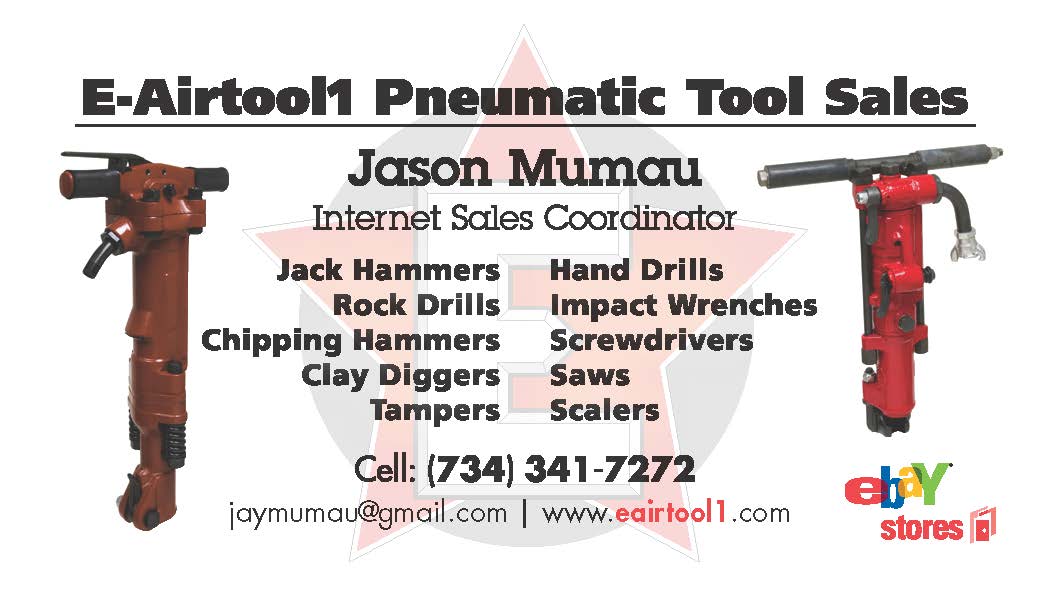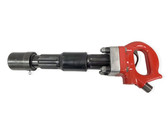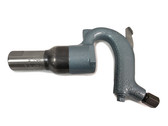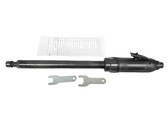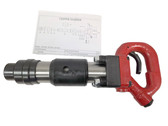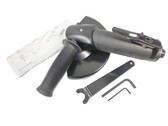 Loading... Please wait...
Loading... Please wait...- Home
- Rivet Busters and Hot Riveters
Categories
- Air Hammers
- Air Motors
- Air Tool Parts & Accessories
- Buffers
- Chipping Hammers
- Clay Diggers Demo Pick Hammers
- Compression Riveters
- Concrete & Aggregate Vibrators
- Crimpers and Bevelers
- Drills
- Grinders
- Hog Ring Tools
- Impact Wrench & Air Ratchets
- Imported from eBay
- Paint Guns & Grease Guns
- Pavement Breakers Jack Hammers
- Planishing Hammer & Dies
- Product
- Pumps / Submersible
- Rivet Busters & Hot Riveters
- Rivet Tools & Squeezers
- Rock Drills
- Routers
- Sanders
- Saws Shears Nibblers Cutting
- Scalers Scabblers
- Screwdrivers
- Tampers & Bench Rammers
- Tuggers and Hoists
- Z Other Tools
- Torque Multipliers / Plarad
Rivet Busters and Hot Riveters
Rivet Busters and Hot Riveters
Riveters / Rivet Busters
Riveters are used for installing rivets and come in various sizes. The size of the tool is generally based on the stroke of the piston. Common sizes can range from 2 4 5 6 8 9 and sometimes in between. Sizes are important depending on the material and size of the shank on your rivet you are looking to install. The bit or tooling that is used with this tool is called a Rivet Set. A Rivet Set does not mean there is more than one piece; a rivet set is a single tooled piece that fits into the end of the tool in order to set/install the rivet into the material you are fastening. Your rivet set size you need will depend on the size of the shank on the rivet you are using. (Not the size of the head of the rivet)
Rivet sets come in various styles or design on the end of them. Some are called High Button/ Acorn/ ASME Cupping and some are called Cone head or Steeple Cupping and others are called Liverpool Cupping, Pan Head, Navy Standard, Shallow Cupping, A.A.R. & M.C.B. Button Head Cupping but the most common style used is just called a Standard Button style. Rivet sizes range from 3/8”, 7/16”, ½”, all the way up to 1 ¼”
Here is a general list of what size riveters will install which size shank rivets.
Note: These are approximations as a general guide. Sizes may vary a little depending on the material of the rivet you are using and the material you are installing the rivet into.
Tool Size Rivet (shank diameter) Sizes to install
2X or 3X ¼” to 7/16”
4X 3/8” to 5/8”
5X aka 50 ½” to ¾”
6X aka 60 5/8” to 7/8”
8X aka 80 3/4” to 1 1/8”
9X aka 90 1” to 1 ¼”
80-X 1 1/8” to 1 ½”
11 1 ½” and up
Rivet Busters are used for removing rivets by cutting the rivet heads off and for the most part used to be used in the bridge and structural industry. They are commonly used now for busting up concrete and horizontal work in tight areas because they typically hit slower than a jack hammer or pavement breaker and are more controllable in small areas. They are also considered alternatives for pole driving and fence work because there handles can sometimes be switched out from D style handles to T style handles. Busters can be used with a special bit sold separately upon request for posts and ground rod driving. Rivet busters have been proven to outlast some breakers, clay diggers, or demolition hammers doing the same job. There are generally 2 common sizes of this type of tool 9” and 11” size. They typically take one of two sizes of bits which can vary in style depending on what you are using the tool for. The two sizes are called 1500 series and Jumbo aka 2000 series. Both size tools can use both size bits by using adapter sleeves in the end of the tool but typically adapter sleeves that convert a tool using 1500 series bits into a tool that uses 2000 series bits will wear out faster since the sleeves are generally thinner to accommodate a larger bit in them. Common bits purchased with this type of tool are flat chisels and moil point bits but blanks and core knock-out punch bits are also a style that can be used with these tools to know out rivets and large pins from structures or large equipment. Common “wearable” parts with these tools are Upper and Lower sleeves Retainers and Side Springs. They can usually be purchased separately.
Jay 734-341-7272
New Products












